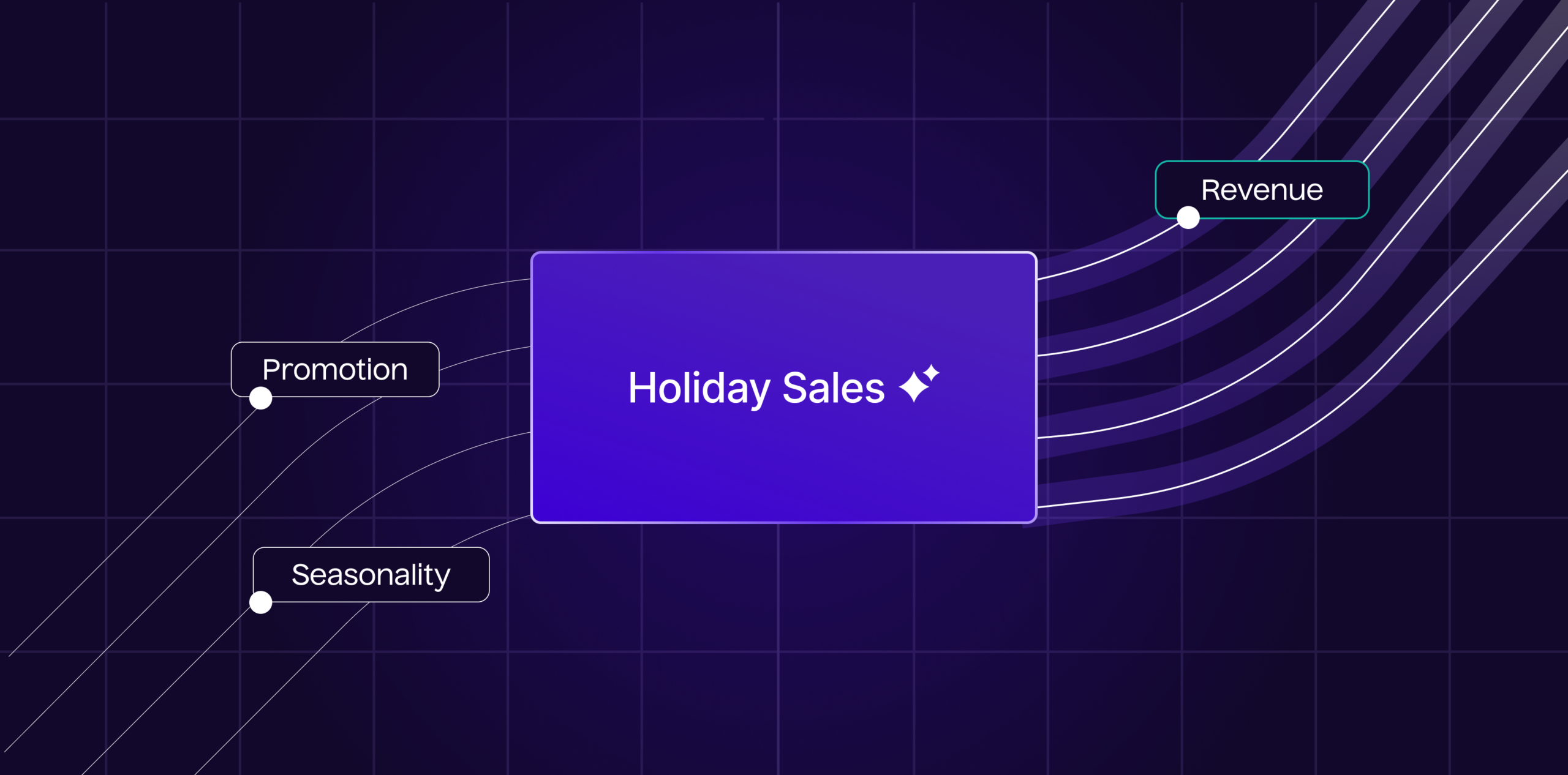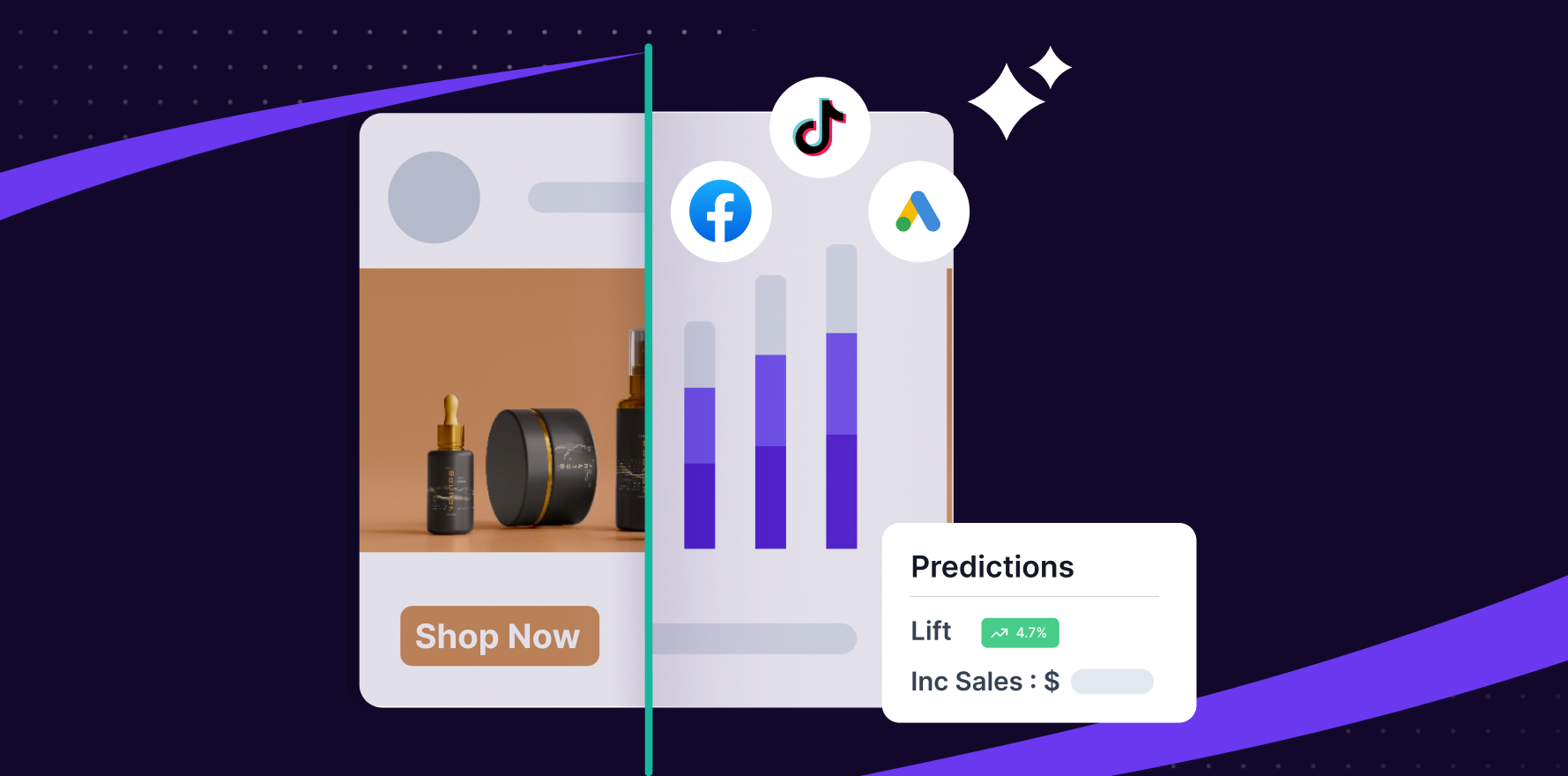TL;DR
In this blog, we’ll explore how building brand equity consistently throughout the year using marketing mix models can drive sustainable growth, strengthen brand perception, and reduce the need for steep discounts when the holiday season arrives.
What’s your game plan for holiday sales? If it involves slashing prices to pull in customers, you’re not alone. Many brands rely on hefty discounts to capture attention and drive sales during peak seasons like Black Friday, Cyber Monday, and the winter holidays. But there’s a hidden cost to this approach.
The hidden costs of discounts
- Eroded profit margins: Deep discounts significantly reduce profit margins. Even if sales volumes increase, the financial gains can be minimal when each transaction yields lower profits.
- Devalued brand perception: Frequent discounts can lead consumers to perceive your brand as a “deal” brand rather than one associated with quality or exclusivity. This shift can dilute your brand’s premium image and make it harder to justify higher prices in the future.
- Trained price sensitivity: Customers may become conditioned to wait for sales rather than purchasing at full price. This behavior undermines long-term revenue stability and customer loyalty.
- Short-term focus: Relying on discounts emphasizes immediate sales over building enduring customer relationships and brand strength.
Building Brand Equity: A Sustainable Alternative
Brand equity refers to the value a brand adds to a product or service beyond its functional benefits. It encompasses the perceptions, emotions, and experiences that customers associate with a brand. High brand equity leads to increased customer loyalty, the ability to command premium prices, and a stronger market position. Unlike discounts, which offer temporary incentives, brand equity fosters enduring customer relationships and consistent sales growth.
Why focus on brand equity over discounts?
- Sustainable competitive advantage: Unlike discounts, which can be easily replicated by competitors, strong brand equity creates a unique identity that differentiates your business in the marketplace.
- Customer loyalty and retention: Brands with high equity enjoy loyal customer bases who are more likely to make repeat purchases and advocate for the brand, reducing the need for constant promotional efforts.
- Premium pricing power: High brand equity allows brands to command higher prices, enhancing profit margins without relying on price cuts.
- Enhanced brand perception and reputation: A strong brand reputation attracts customers organically, increasing the likelihood of purchases even without aggressive discounting.
- Resilience during economic downturns: Brands with strong equity are better positioned to maintain sales during economic challenges, as customers continue to trust and value the brand.
Take Apple, for instance. Known for innovation, design, and reliability, Apple has cultivated a loyal customer base willing to pay premium prices for its products, rarely waiting for a sale. This loyalty stems from the brand’s strong identity and the trust it has built over the years, allowing Apple to sell at full price year-round without heavily relying on discounts.
Leveraging marketing mix modeling (MMM) to build brand equity
Marketing mix modeling is a statistical technique used to measure the effectiveness of various marketing channels and tactics on business outcomes, such as sales or revenue. By analyzing historical data, MMM helps businesses understand how different marketing elements (like TV, radio, digital ads, and promotions) contribute to their overall success, allowing them to allocate their budgets more effectively.
In an MMM framework, brand equity is quantified as the baseline metric: a consistent foundation of brand performance that persists regardless of seasonal spikes or campaign-driven boosts.
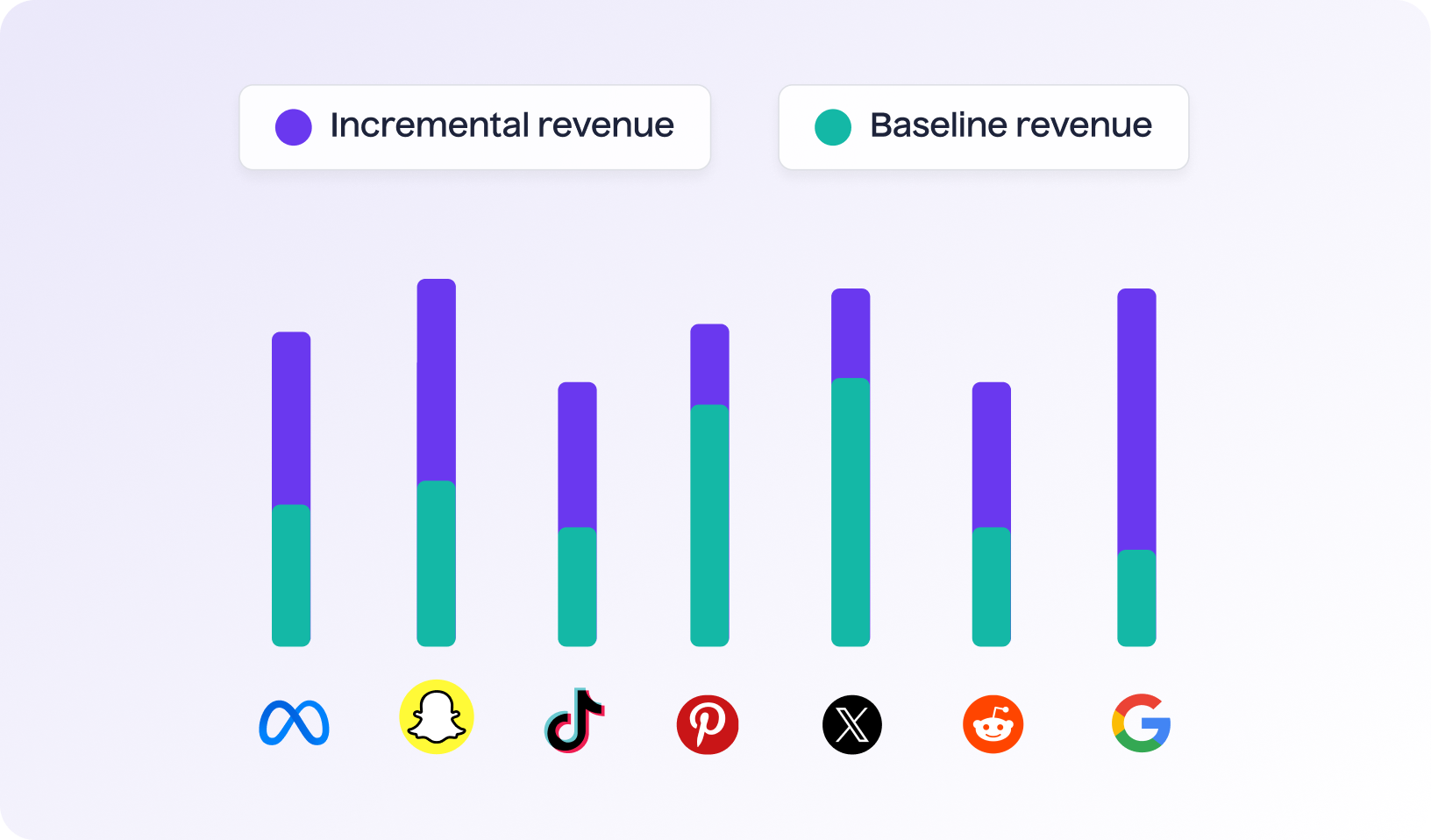
Baseline sales represent the steady, organic revenue that a brand generates due to its established trust, recognition, and perceived value without active marketing or promotions. This baseline acts as a benchmark, showing the level of sales a brand could sustain if it paused all marketing efforts today. By understanding this core revenue, marketers can differentiate between conversions driven by brand loyalty (non-incremental) and those that result directly from promotional efforts (incremental).
A strong baseline of brand equity contributes to steady demand and customer engagement, even outside peak promotional periods. This organic demand helps brands maintain healthy profit margins without needing frequent discounts, supporting a sustainable growth model that’s less reliant on promotions.
3 ways MMM propels brand equity for year-round growth
An upward-trending baseline in MMM is key for sustainable growth. This metric shows that the brand’s value in the eyes of customers is increasing independently of short-term campaigns or seasonal discounts. Here are three ways it powers brand equity:
1. It identifies incremental conversions & avoids pitfalls of coupon attribution
Coupon attribution, often used to measure the impact of discounts, tracks sales tied to specific promotions by assigning unique codes to campaigns. While this can show how discounts drive conversions, it doesn’t differentiate between new customers influenced by the promotion and those who would have purchased anyway. This lack of insight into incrementality means brands risk offering discounts to customers who don’t need them, effectively eroding profit margins on conversions that might have happened without the promotion.
With MMM, brands gain a clearer view of whether coupon-driven sales are genuinely incremental. It analyzes the total impact of marketing efforts, including discounts, to see if they drive new demand or simply capture existing interest.
Moreover, when planning for holiday sales, many brands opt for heavy discounts, assuming it will yield a proportional increase in sales. However, not all discounts deliver equal incremental impact. Using MMM, brands can compare different discount types, such as a 40% off vs. a flat $99 discount, to see which generates more true incremental sales.
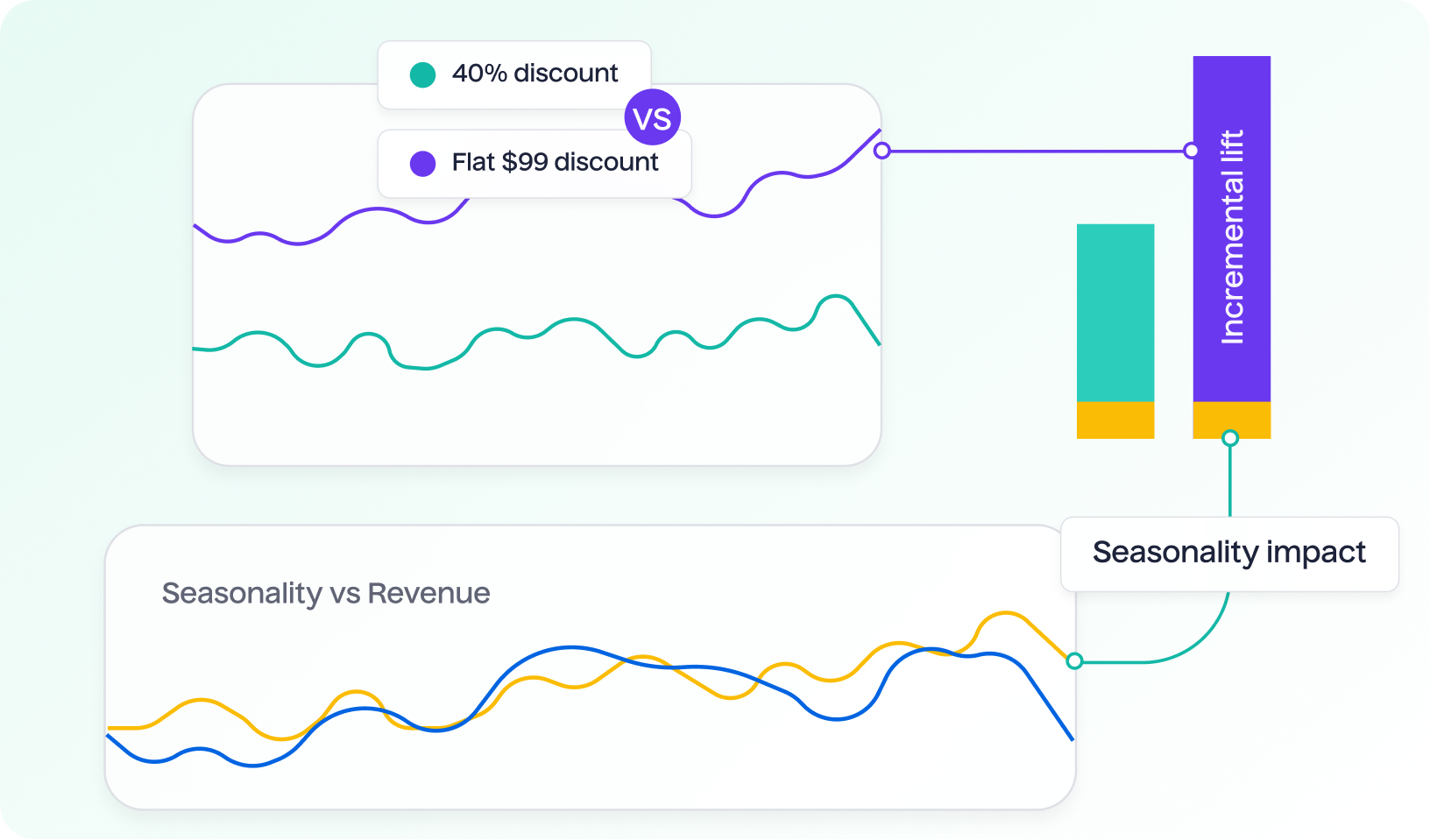
This insight helps brands distinguish between incremental and non-incremental conversions, allowing them to use discounts more strategically, focusing on campaigns that genuinely boost new sales rather than giving away margins unnecessarily.
2. It helps you optimize BOFU (Bottom of Funnel) channel effectiveness
BOFU channels often focused on driving immediate conversions are crucial for moving potential customers from consideration to purchase. However, these channels can quickly reach a point of diminishing returns. In marketing, diminishing returns occur when additional investment in a heavily used channel yields less incremental value. For instance, pouring more budget into retargeting ads may initially lead to higher conversions, but as saturation sets in, each additional dollar spent delivers less impact. Over time, this oversaturation can lead to inefficient budget allocation, where funds are wasted on channels that are no longer driving meaningful growth.
This is where MMM can play a transformative role. It incorporates a diminishing returns curve that visualizes the incremental impact of additional investments in each channel. By examining this curve, brands can see exactly when BOFU channels begin to experience lower incremental returns, indicating saturation.
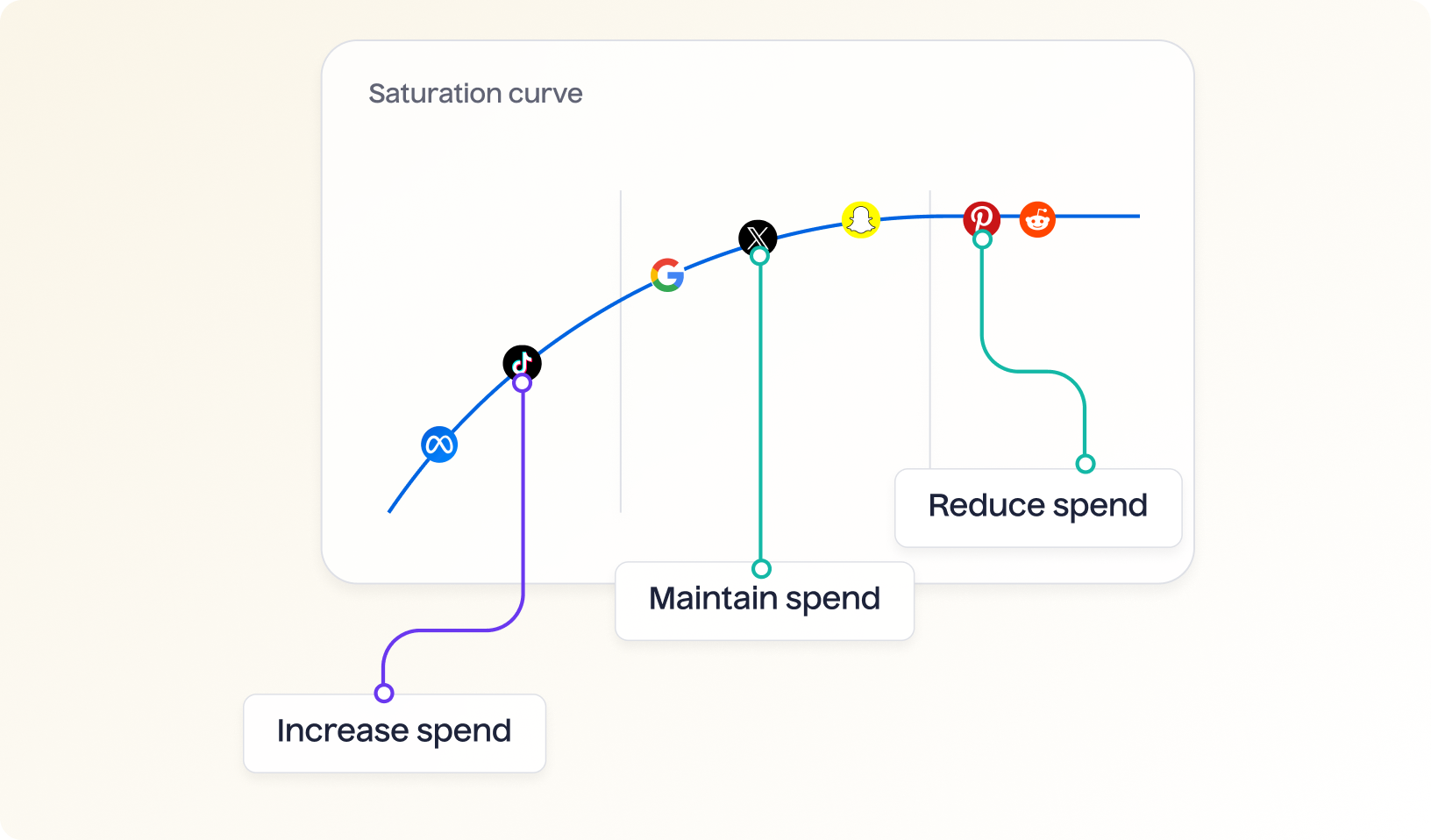
This insight enables marketers to identify the optimal spend threshold for each channel, maximizing returns without overspending. For BOFU channels, this means being able to allocate just enough budget to capture demand without wasting resources on diminishing gains.
3. It helps you reallocate budget to TOFU channels:
Once MMM identifies saturation in BOFU channels, a strategic opportunity arises to reallocate budget to top of funnel (TOFU) channels. Unlike BOFU, TOFU channels focus on brand awareness and attracting new audiences, laying the groundwork for long-term growth by filling the top of the marketing funnel. By shifting budget from saturated BOFU channels to TOFU initiatives, brands can drive more new customer acquisition and increase overall brand awareness, setting the stage for future conversions.
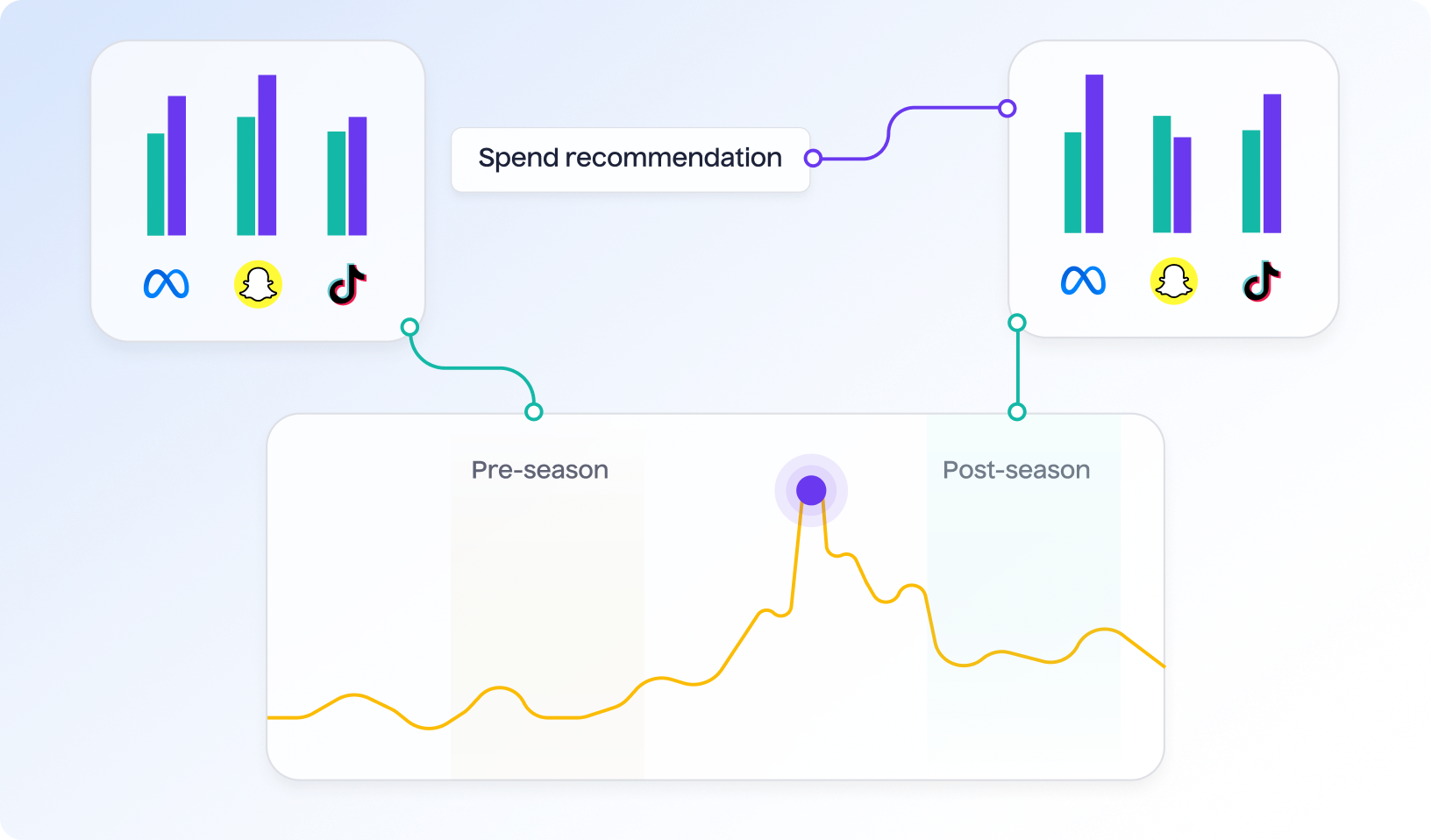
While BOFU efforts ensure that existing demand is captured effectively, TOFU investment fuels future demand. Together, they create a balanced marketing strategy that drives both immediate sales and long-term brand health, minimizing dependency on discounts and deep promotions.
Final thoughts
Building brand equity year-round offers brands a powerful alternative to relying on heavy seasonal discounts. By focusing on cultivating a strong, positive brand image, companies can attract loyal customers who are willing to buy at full price, even during peak holiday seasons.
With Lifesight’s marketing mix modeling (MMM), brands can accurately identify incremental versus non-incremental conversions, optimize channel effectiveness and reallocate budget toward more productive channels or tactics. This approach not only preserves profit margins but also fosters a sustainable growth engine that propels brand value forward.
Ready to build a brand that thrives year-round? Book a demo with Lifesight to see how our advanced measurement tools can help you implement a data-driven, sustainable growth strategy that prioritizes brand equity and maximizes ROI.
You may also like
Essential resources for your success
